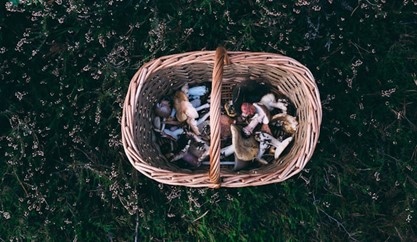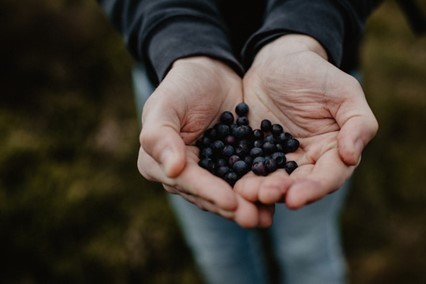As an avid outdoorsman, Angelo Dellomo of Mays Landing has spent the majority of his life immersed in nature, exploring its wonders and honing his skills in outdoor pursuits. Throughout his journey, Angelo Dellomo has developed a deep passion for the wilderness and a keen understanding of its intricacies. In the following article, Angelo Dellomo of Mays Landing shares his knowledge and expertise with others who are also inspired by the great outdoors, explaining wild berry foraging, learning how to identify, harvest, and prepare wild edibles both responsibly and sustainably.
Foraging for wild edibles is an ancient practice that reconnects us with nature’s bounty while providing an opportunity to explore the wilderness and discover delicious, nutritious foods. By following ethical guidelines and practicing mindful harvesting techniques, we can enjoy the abundance of nature while ensuring the health and vitality of our ecosystems.
Angelo Dellomo of Mays Landing on Understanding Foraging Ethics and Sustainability
Before venturing into the wild, it’s essential to understand the principles of ethical foraging and sustainable harvesting. Respect for nature and conservation should always be top priorities. Avoid over-harvesting and damaging delicate ecosystems by only taking what you need and leaving plenty behind for wildlife and others. Angelo Dellomo of Mays Landing says to be mindful of endangered species and sensitive habitats and familiarize yourself with local regulations and guidelines governing foraging in your area.
 Identifying Wild Edibles
Identifying Wild Edibles
Plant identification apps have become invaluable tools for aspiring foragers, offering a convenient and accessible way to learn about local flora. Angelo Dellomo of Mays Landing emphasizes the importance of accurate plant identification as a fundamental step in foraging. These apps provide users with a comprehensive database of plant species, allowing them to easily search and identify plants based on various characteristics such as leaf shape, flower color, and habitat.
Also, investing in a reputable field guide or enrolling in a course led by experienced wilderness guides are also recommended. These resources offer hands-on learning experiences and expert guidance, enabling individuals to become proficient in identifying wild edibles. Starting with easily recognizable plants like dandelions, wild berries, and common edible mushrooms allows beginners to build their confidence and knowledge gradually.
Taking time to observe and study each plant’s characteristics is essential for accurate identification. By closely examining leaves, stems, flowers, and fruits, foragers can develop a deeper understanding of the plants they encounter in the wild. Additionally, practicing caution and seeking guidance from experienced wilderness experts can help ensure safe and responsible foraging practices. With the aid of plant identification apps and proper education, individuals can confidently explore the world of wild edibles while minimizing the risk of misidentification.
Harvesting Wild Edibles Responsibly
When harvesting wild edibles, always prioritize sustainability and environmental stewardship. Use sharp, clean tools like scissors or knives to minimize damage to plants and avoid pulling up entire roots or plants unless they are invasive species. Angelo Dellomo of Mays Landing suggests harvesting only from areas free of pesticides, pollutants, or other contaminants, and avoid foraging near roadsides or industrial sites where the risk of contamination is higher. Be sure to leave some edible plants behind to ensure their continued growth and reproduction.
Safety Considerations
While foraging can be a rewarding and enjoyable activity, it’s essential to prioritize safety and avoid consuming any wild plants unless you are absolutely certain of their identification. Angelo Dellomo of Mays Landing explains that some wild plants are toxic or poisonous and can cause allergic reactions, so always err on the side of caution when in doubt. Start by sampling small amounts of new plants to test for any adverse reactions, and never consume wild mushrooms without expert identification, as many species are poisonous.
Preparing Wild Edibles
Once you’ve successfully harvested wild edibles, it’s time to transform them into delicious culinary creations. Wash all foraged plants thoroughly to remove dirt, insects, and other debris, and prepare them using simple, flavorful recipes that highlight their natural flavors. Wild greens can be sautéed with garlic and olive oil, while wild berries can be used to make jams, jellies, or tinctures. Angelo Dellomo of Mays Landing suggests experimenting with different cooking methods and flavor combinations to make the most of your found treasures.
Preserving Wild Edibles
Angelo Dellomo of Mays Landing says to enjoy wild edibles throughout the year, consider preserving them through various methods such as drying, freezing, or pickling. Herbs and mushrooms can be dried and stored in airtight containers for future use, while berries can be frozen for use in smoothies, baked goods, or sauces. Experiment with different preservation techniques to find the ones that best suit your taste preferences and culinary needs.
Conclusion
Foraging for wild edibles offers a unique opportunity to connect with nature, explore the outdoors, and discover the abundance of natural foods available in our environment. By practicing ethical foraging techniques and prioritizing sustainability, we can enjoy the pleasures of wild edibles while ensuring the health and vitality of our ecosystems for generations to come. So, grab your field guide, head into the wilderness, and embark on a delicious journey of discovery with wild edibles as your guide.








